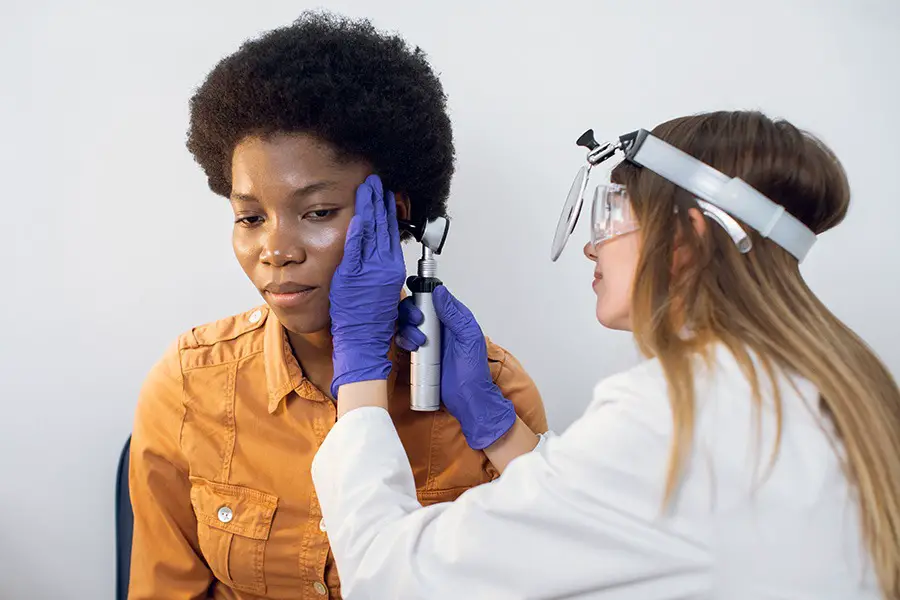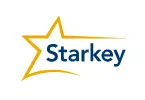Introduction
Confronting sensorineural hearing loss (SNHL) is notably challenging, particularly for the elderly. Thankfully, modern technological advancements have fostered solutions that enrich the quality of life for seniors impacted by this condition. This excursion into the realm of SNHL technology will encompass hearing aids, cochlear implants, mobile applications, auxiliary devices, and the thrilling advancements in artificial intelligence and machine learning.
This exploration isn’t just about technological advancements; it’s about fostering independence and self-reliance for older adults grappling with SNHL. Amid the struggles of hearing loss, significant strides in this area inspire optimism about the future. This post intends to illuminate these transformative technologies and examine the prospects of this burgeoning field.
Please remember that this post, while comprehensive, is not a substitute for professional medical advice. Consult with healthcare practitioners for personalized recommendations or diagnoses. Now, let’s delve into this technological expedition, examining how diverse technologies are influencing the lives of seniors experiencing SNHL.
Hearing Aids and Sensorineural Hearing Loss: A Technological Evolution
The transformation of hearing aids over the decades has been remarkable. Evolving from the rudimentary ear trumpets of old to the advanced digital devices of today, hearing aids remain a go-to solution for sensorineural hearing loss. Contemporary hearing aids are outfitted with sophisticated features like noise cancellation, directional microphones, and integration with other digital devices, vastly improving auditory experiences for those with SNHL.
Envisioning the future, ongoing enhancements hint at even more advanced solutions. Active research is underway for the creation of “smart” hearing aids capable of assessing the acoustic environment and adapting dynamically. These unceasing enhancements epitomize the persistence and ingenuity of human innovation, committed to enriching the lives of those managing SNHL.
Advancements in Cochlear Implants for Sensorineural Hearing Loss
Cochlear implants, another breakthrough invention, have fundamentally transformed the management of severe to profound sensorineural hearing loss. Unlike hearing aids, which amplify sound, cochlear implants circumvent the damaged sections of the ear to directly stimulate the auditory nerve.
The future horizon of cochlear implant technology is filled with potential. Current research aims to refine the technology to enhance sound quality, improve speech comprehension in noisy environments, and incorporate artificial intelligence to optimize the auditory experience of users. Additionally, ongoing studies into merging cochlear implants with drug delivery systems to protect or regenerate auditory nerve cells underscore the exciting prospects on the horizon.
Smartphone Applications: Empowering the Sensorineural Hearing Loss Community
The advent of smartphones has ushered in a new era of assistive technology for individuals experiencing sensorineural hearing loss. A plethora of applications now provide features such as live-captioning, sign language interpretation, and sound amplification. These features are particularly advantageous for seniors who may be managing other age-related sensory declines, making these applications a potent ally.
As app technology continues to advance, future iterations promise more personalized and user-friendly alternatives. For example, apps could be designed to ‘learn’ from the user’s behavior and automatically adjust the settings of connected devices based on diverse environments. The expanding integration of health tracking in smartphones could also lead to apps that supervise auditory health and offer alerts or recommendations, further cementing smartphones as an essential tool for seniors with SNHL.
Sound Oasis® Bluetooth® Tinnitus Sound Therapy System®
Discover the ultimate solution for managing tinnitus with Play. This innovative device offers you 20 meticulously crafted built-in sounds, specifically recommended by esteemed audiologists worldwide. Dive into a world of soothing melodies and find respite from the challenges of tinnitus.
Assistive Devices for Sensorineural Hearing Loss: Technological Innovations
Beyond hearing aids and cochlear implants, there’s a wide range of assistive listening devices (ALDs) available to enhance daily life for seniors with SNHL. These include amplified telephones, television listening systems, and alerting devices that use visual signals or vibrations for alarms and doorbells. Technological advancements have also led to the development of FM systems and induction loop systems, which offer significant advantages in challenging listening environments like theaters or lecture halls.
These assistive devices demonstrate how technology can adapt to meet specific needs. They can offer seniors with SNHL a level of convenience and comfort in their homes or public spaces. As technological boundaries continue to be pushed, we can anticipate a future with even more innovative and customized solutions designed to enhance the daily lives of individuals with SNHL.
Sensorineural Hearing Loss Treatment Revolutionized Through AI and Machine Learning
AI and machine learning represent an exciting frontier in the sphere of sensorineural hearing loss. Current applications of AI technology aim to enhance hearing aid functionality by enabling these devices to learn from user preferences and adjust accordingly. Additionally, AI is being utilized in developing sophisticated speech recognition systems, which could be transformative for those with SNHL.
Simultaneously, machine learning algorithms are being utilized to predict the success of cochlear implantation and to tailor the device programming to individual patients. This personalized approach could lead to more successful outcomes and enhanced patient satisfaction.
As we continue to explore the potentials of AI and machine learning, their application in SNHL treatment could drastically transform the field, paving the way for more efficient and personalized treatment methods than ever before.
Triumphs: Children Conquering Sensorineural Hearing Loss
Despite the trials associated with sensorineural hearing loss, innumerable children exhibit remarkable resilience and determination. Numerous accounts exist of children with SNHL who, with the aid of early interventions, assistive technology, and educational accommodations, excel academically, flourish socially, and achieve notable success. These stories shine a light on the potential outcomes when barriers are removed and appropriate support is in place.
These success stories, while uplifting, should be viewed not as exceptions, but as achievable outcomes. They underscore the need for comprehensive support systems and the transformative power of resilience, thereby strengthening the argument for widespread, equitable access to interventions and resources for children with SNHL.
Conclusion
This investigation of technological advancements for seniors with sensorineural hearing loss depicts a dynamic and rapidly progressing field. It’s an area where creativity and empathy intersect, with developers and researchers dedicated to enhancing the quality of life for those with SNHL.
The steady advancements in hearing aids, cochlear implants, smartphone apps, assistive devices, and the ongoing exploration of AI and machine learning forecast a future where sensorineural hearing loss is not an impediment to communication and a fulfilling life. They promise a future where technology not only serves as a tool but as a companion in navigating the world of sound.
As we press on, it’s vital to stay informed about these advancements. It’s not merely about being aware of the latest devices or apps; it’s about comprehending the capabilities of these technologies and how they can cater to unique needs. It’s about harnessing these innovations in our quest for a world without barriers for those with SNHL.
While we recognize these advancements, we must also stress the importance of continuous research and investment in this field. Only through perpetual innovation can we continue to ameliorate the lives of seniors with SNHL.
Lastly, the significant progress in this field inspires us to look forward with optimism. It is a testament to human resilience and ingenuity, committed to enhancing the lives of those dealing with SNHL. This is the journey we are on, and it’s a journey filled with the promise of a more inclusive and accessible world.

Decoding Silence: An Analytical View on the Advances in Conductive Hearing Loss Research and Treatment
This analytical article sheds light on conductive hearing loss, offering an in-depth exploration of its genetic factors, treatment advances, and promising experimental therapies.

Embracing the Melody of Life: Navigating the Journey with Conductive Hearing Loss
A blog post delving into the experiences and challenges of living with conductive hearing loss, discussing its impact on everyday life, social interactions, mental health, and the potential benefits of hearing aids and cochlear implants.





